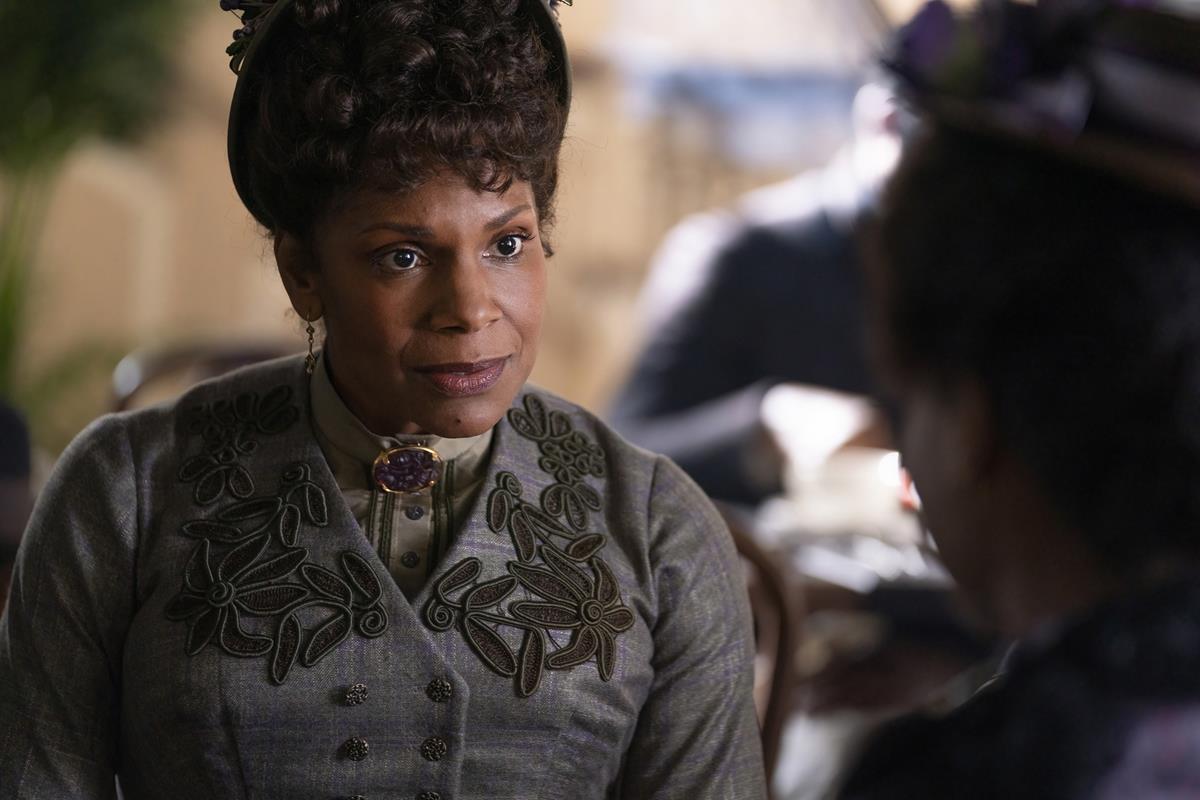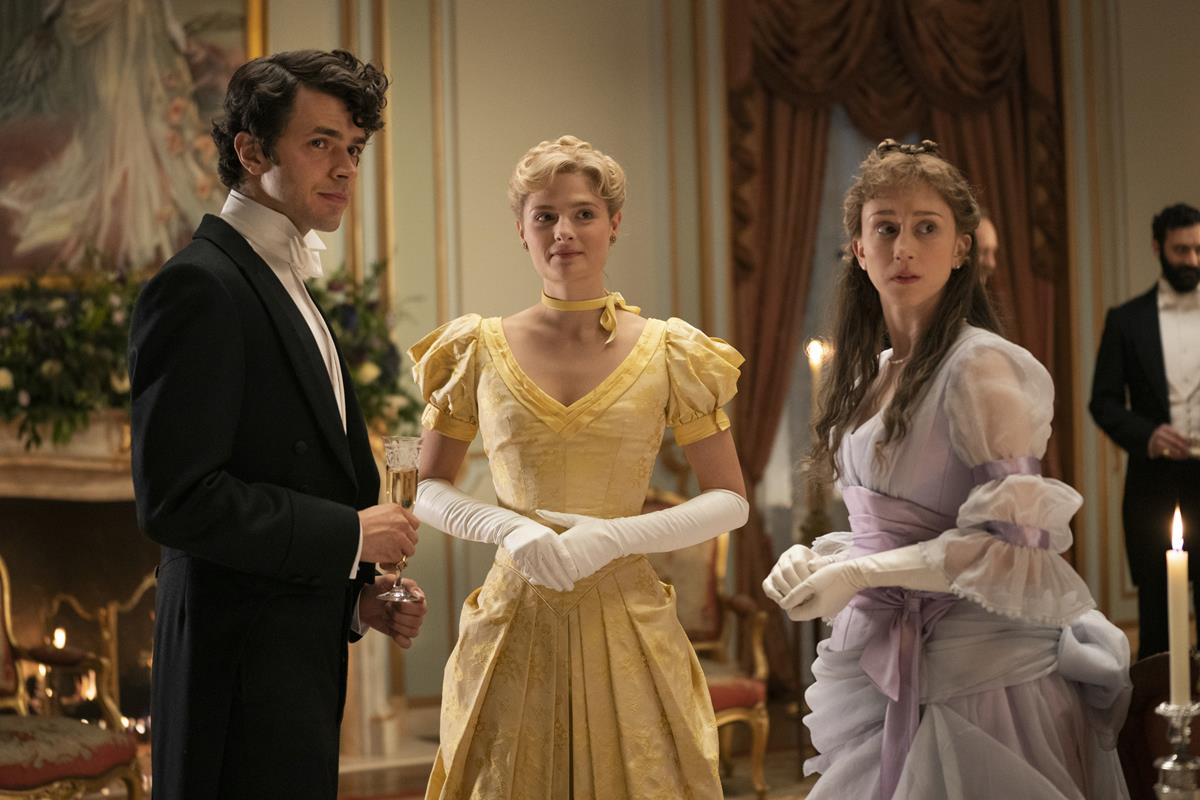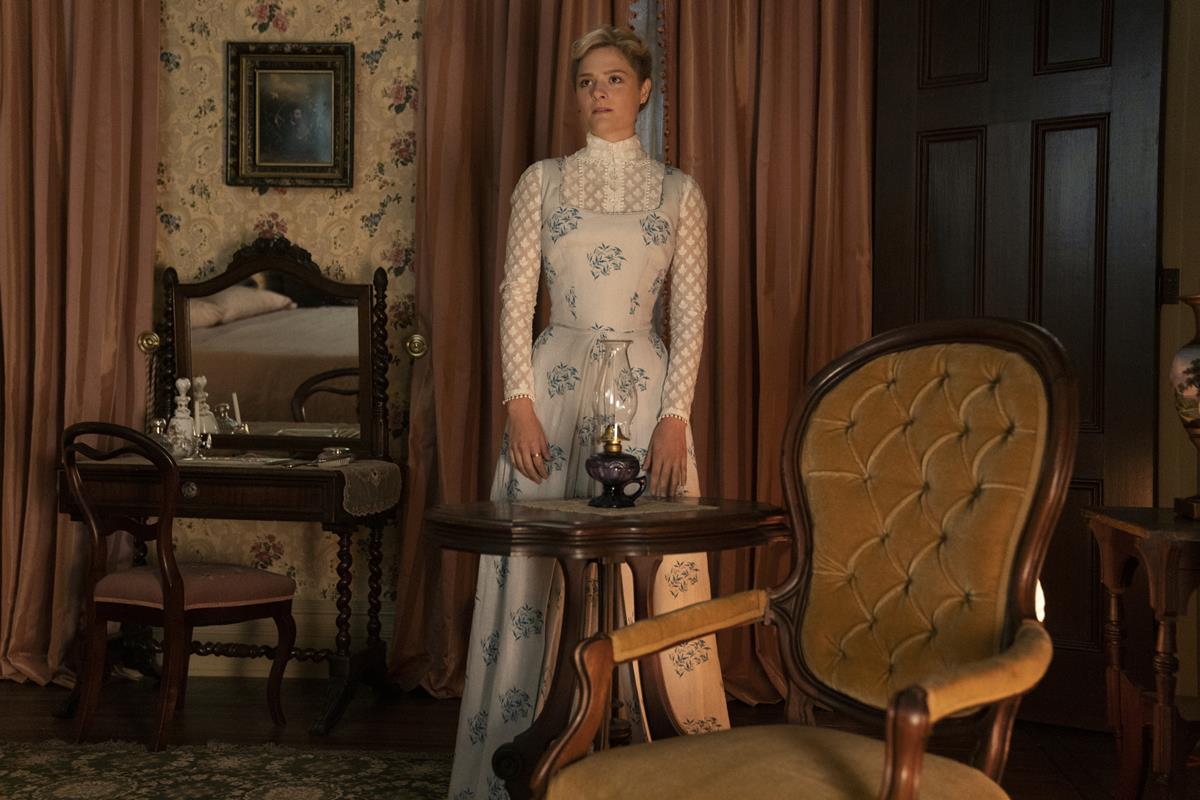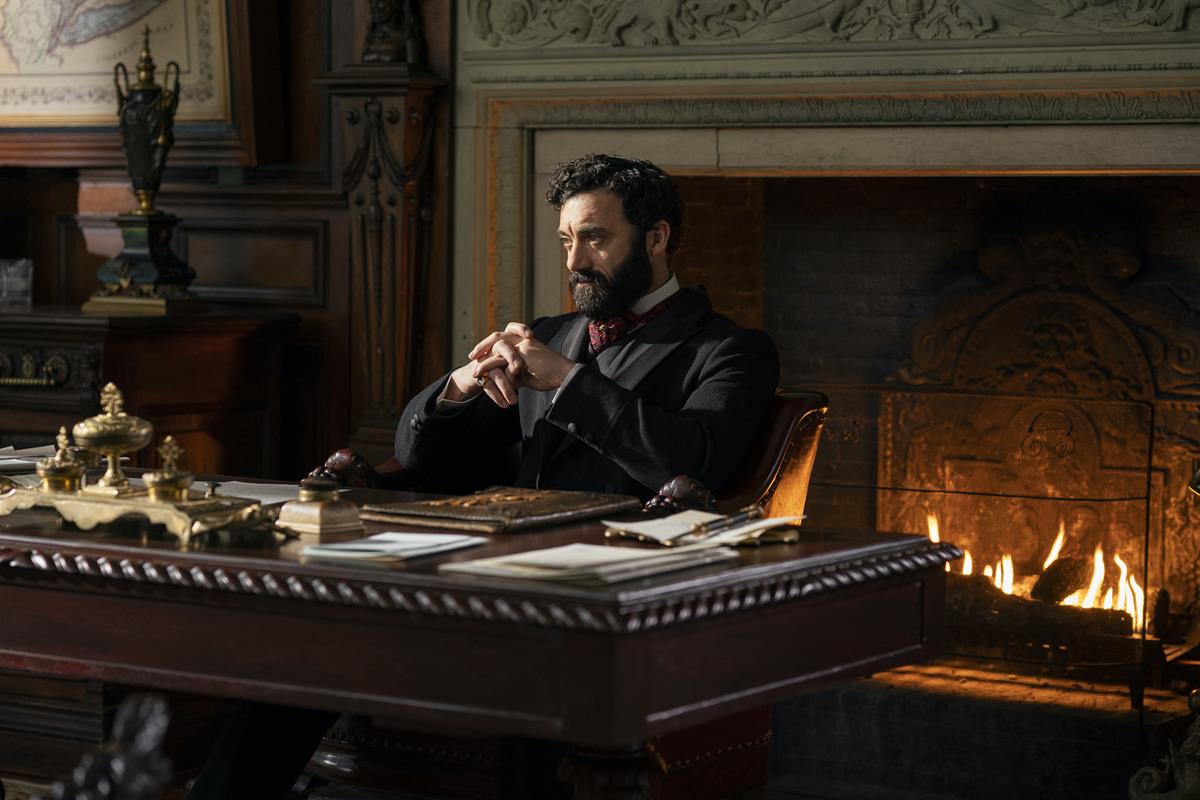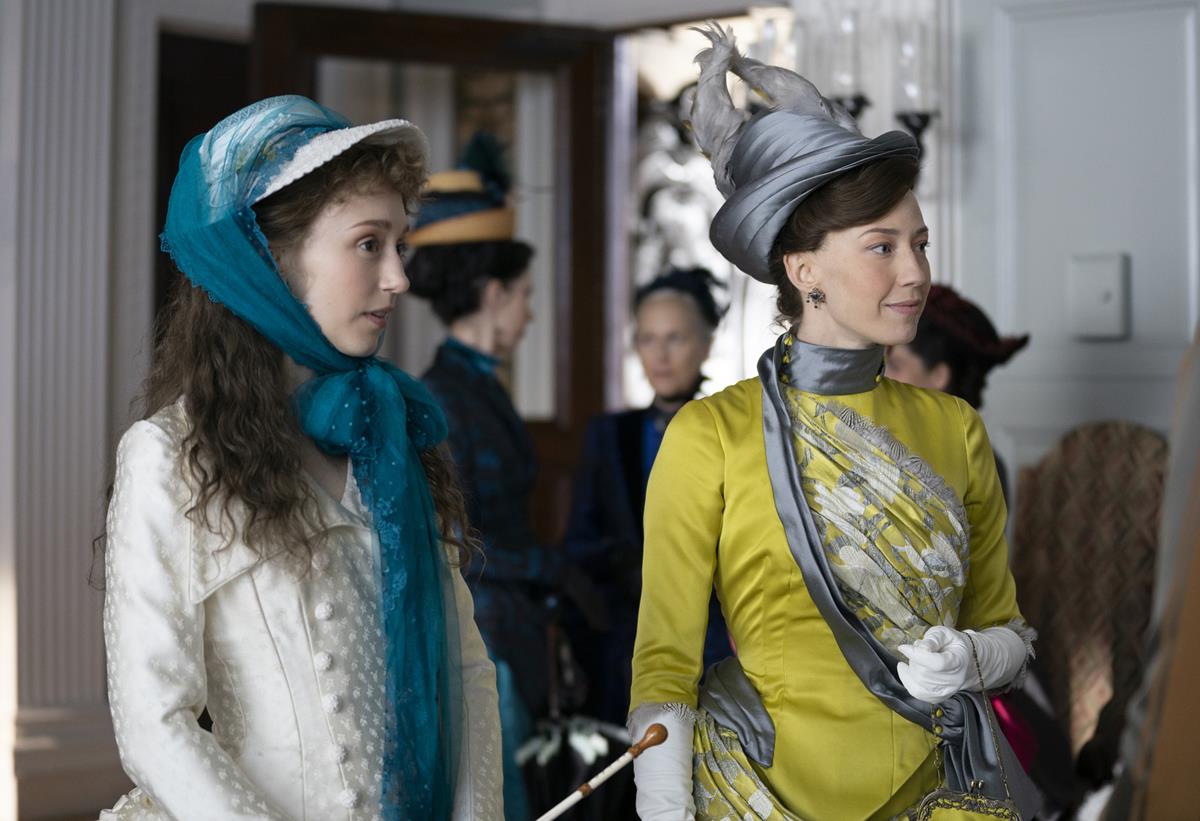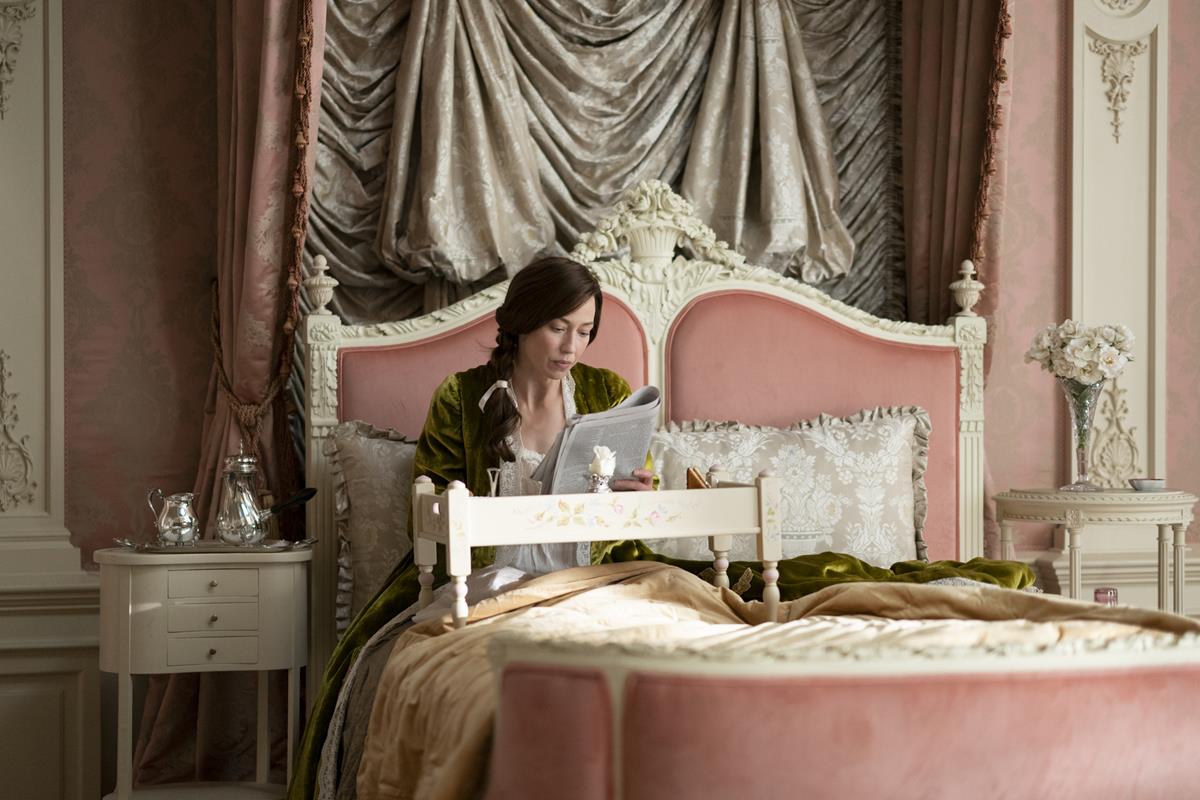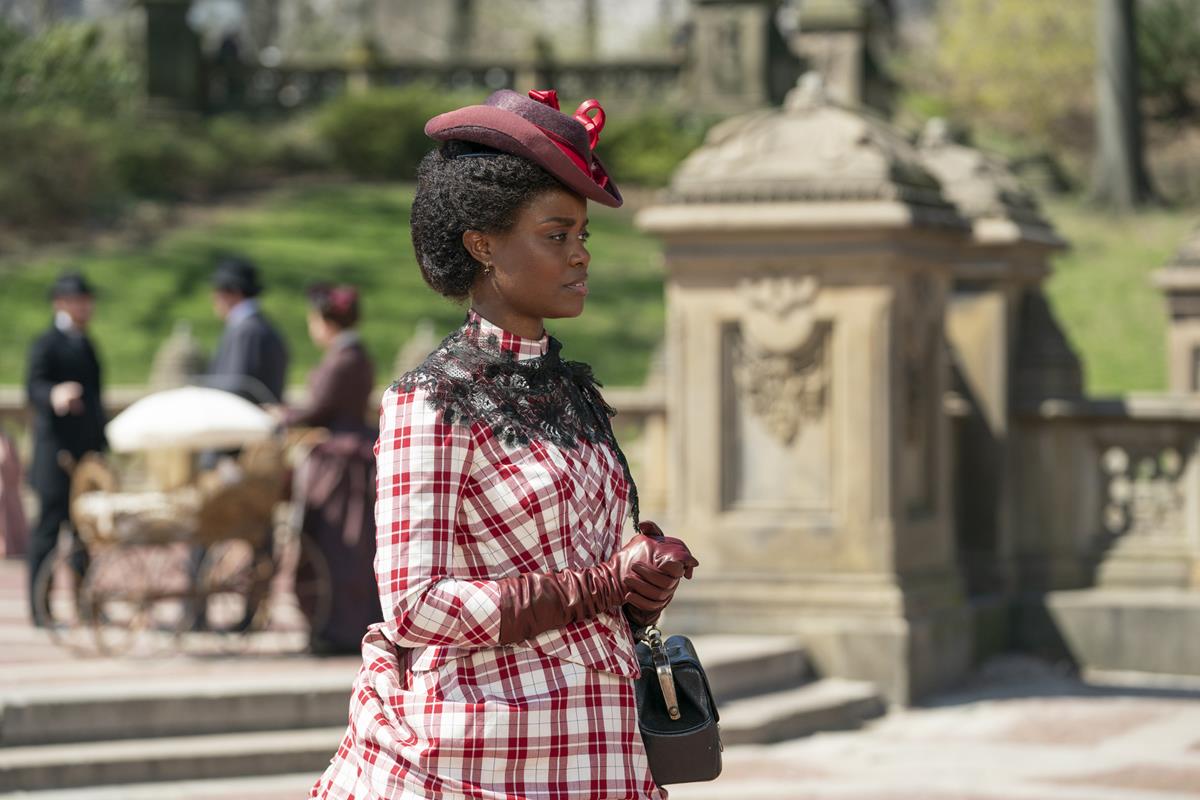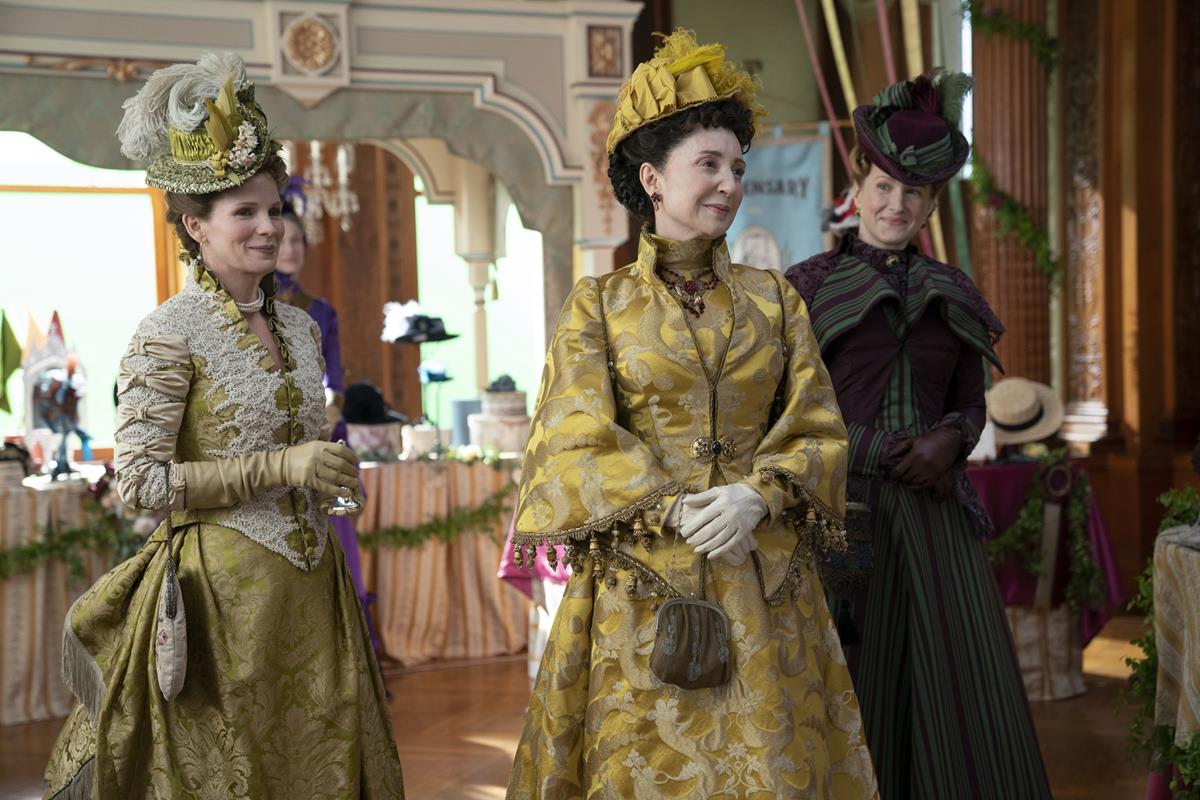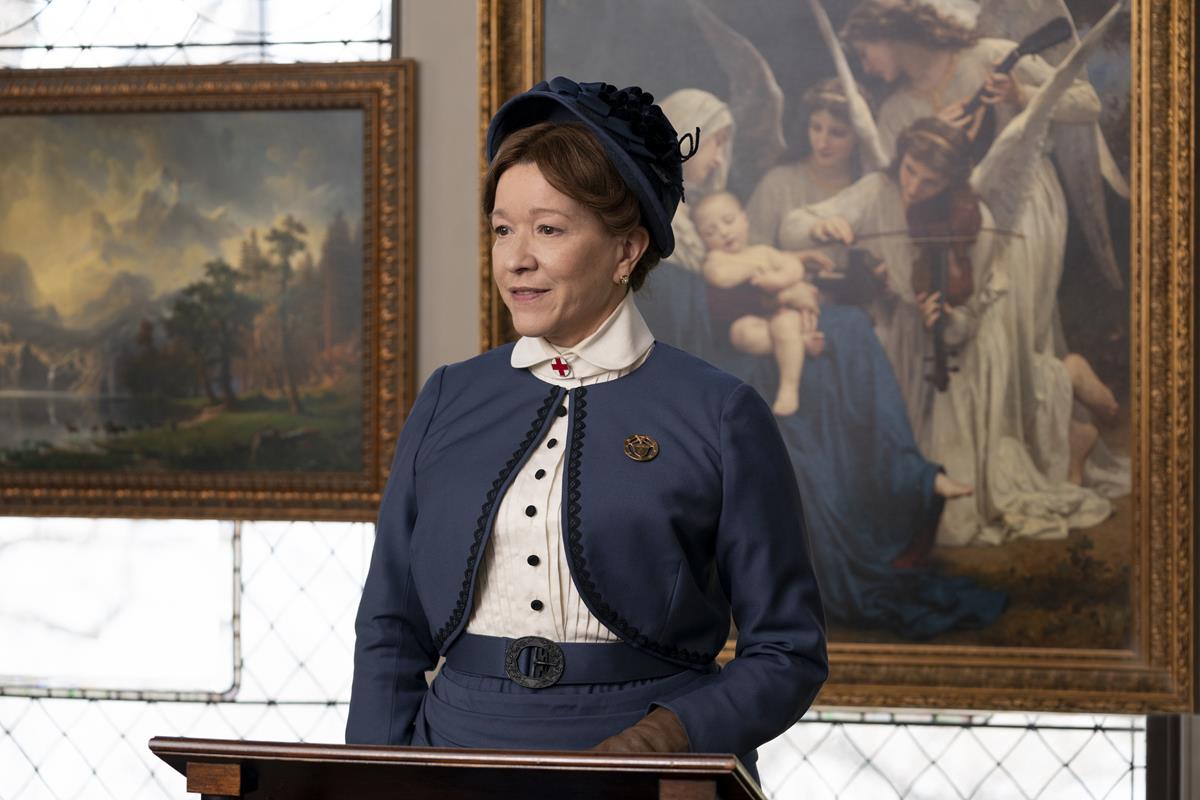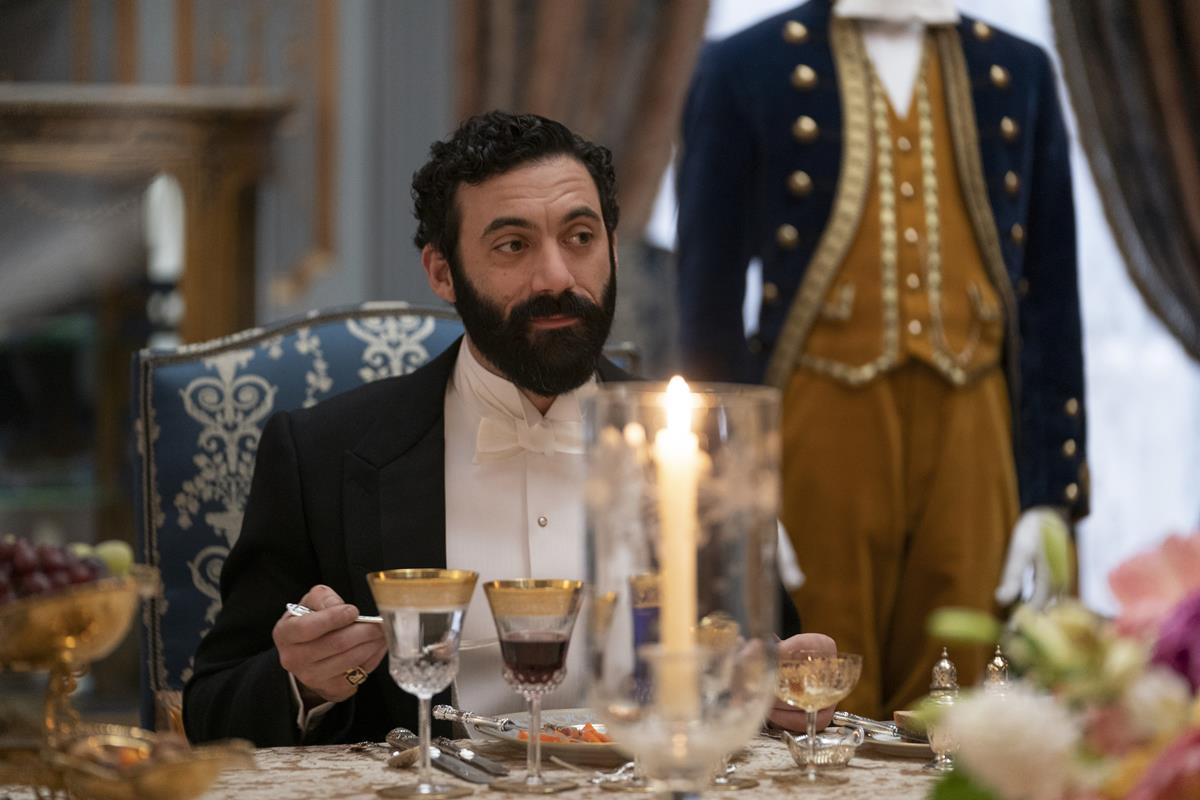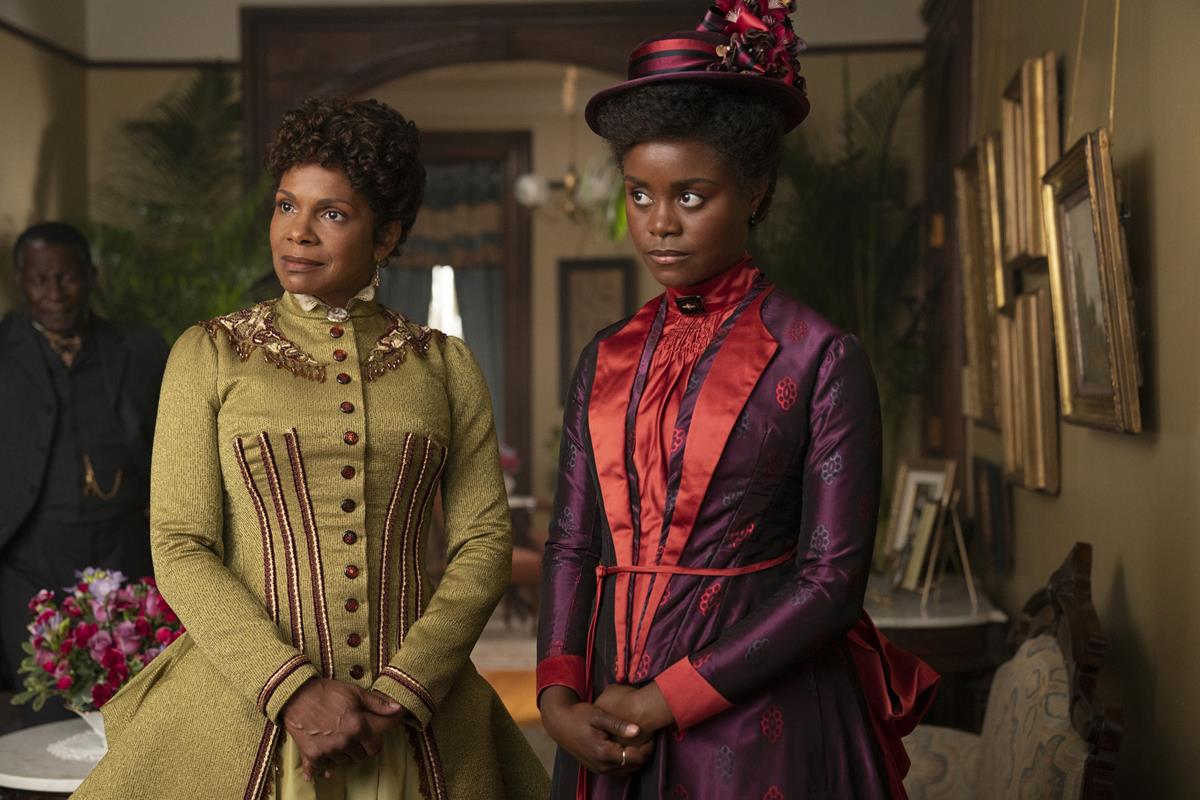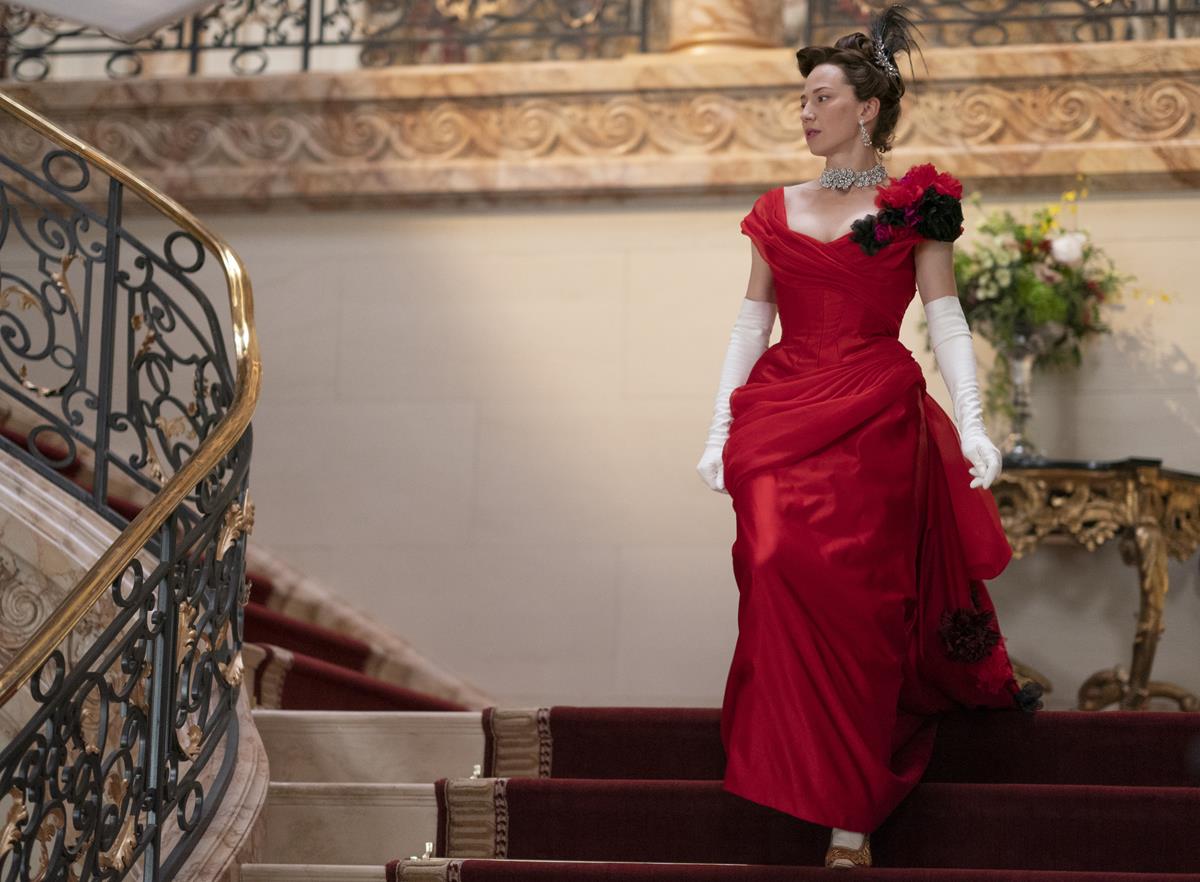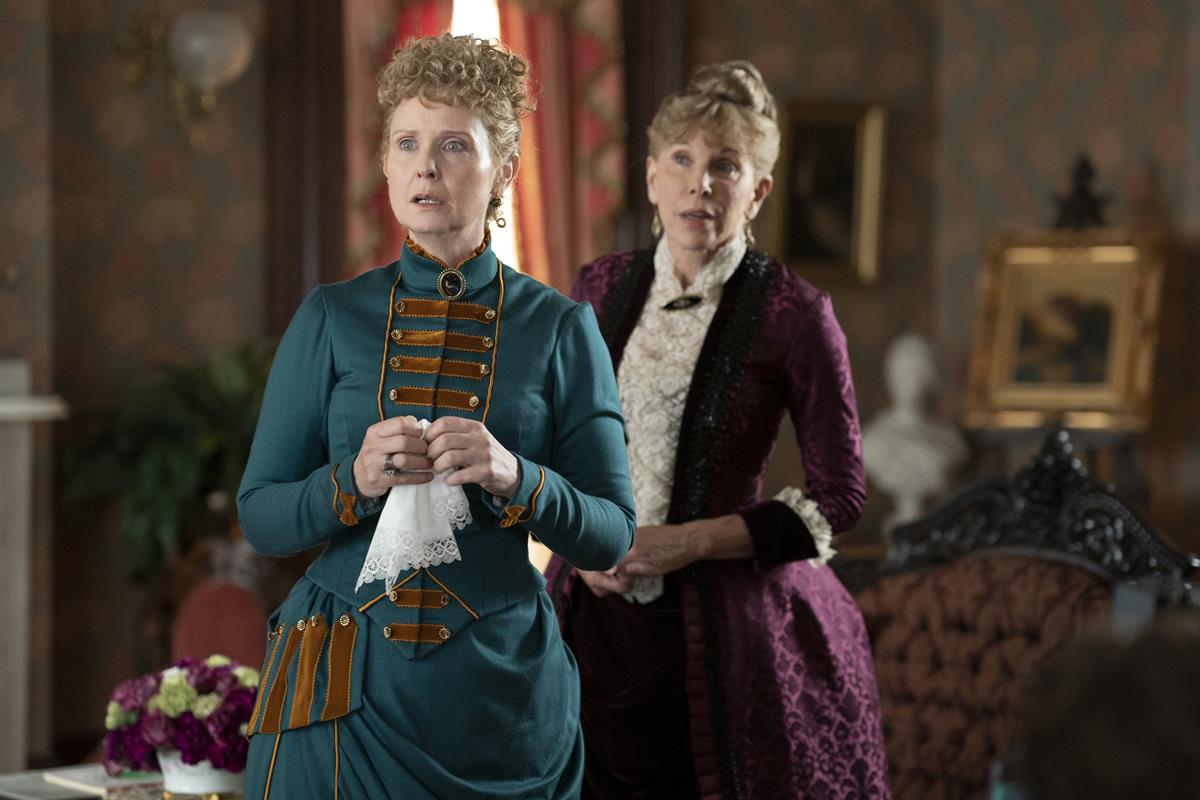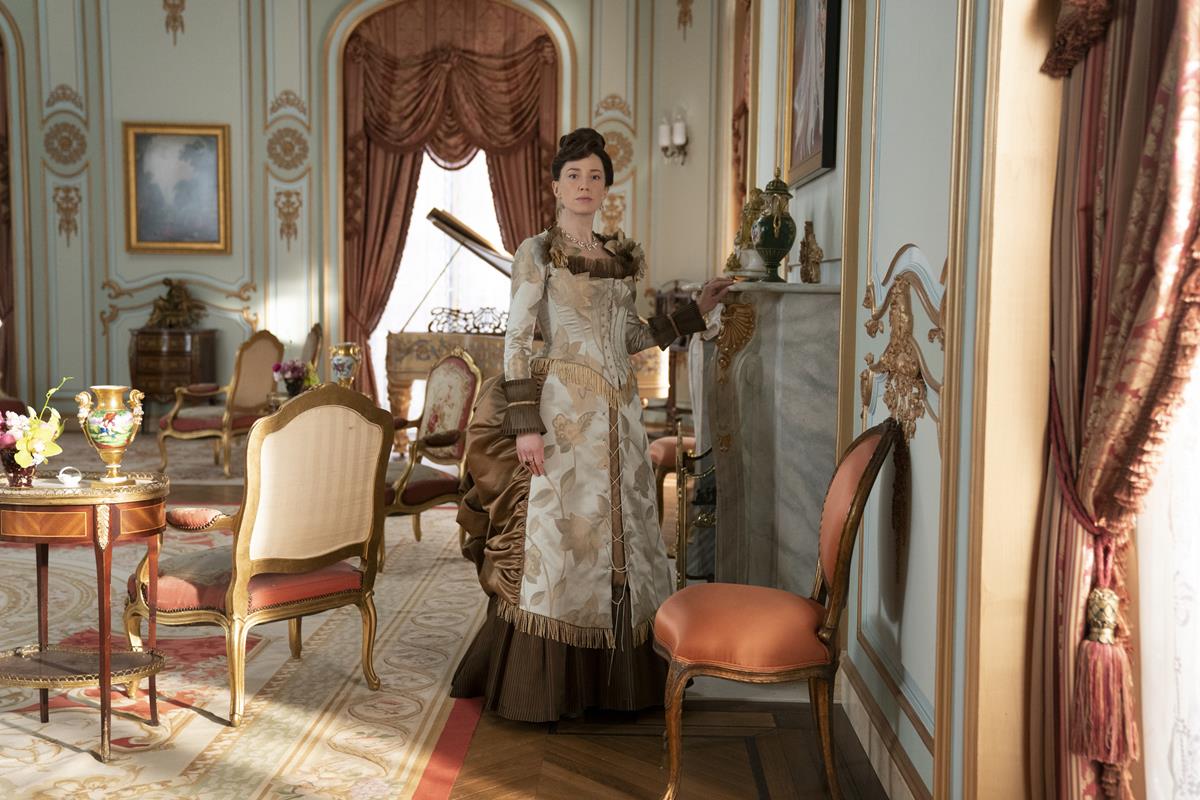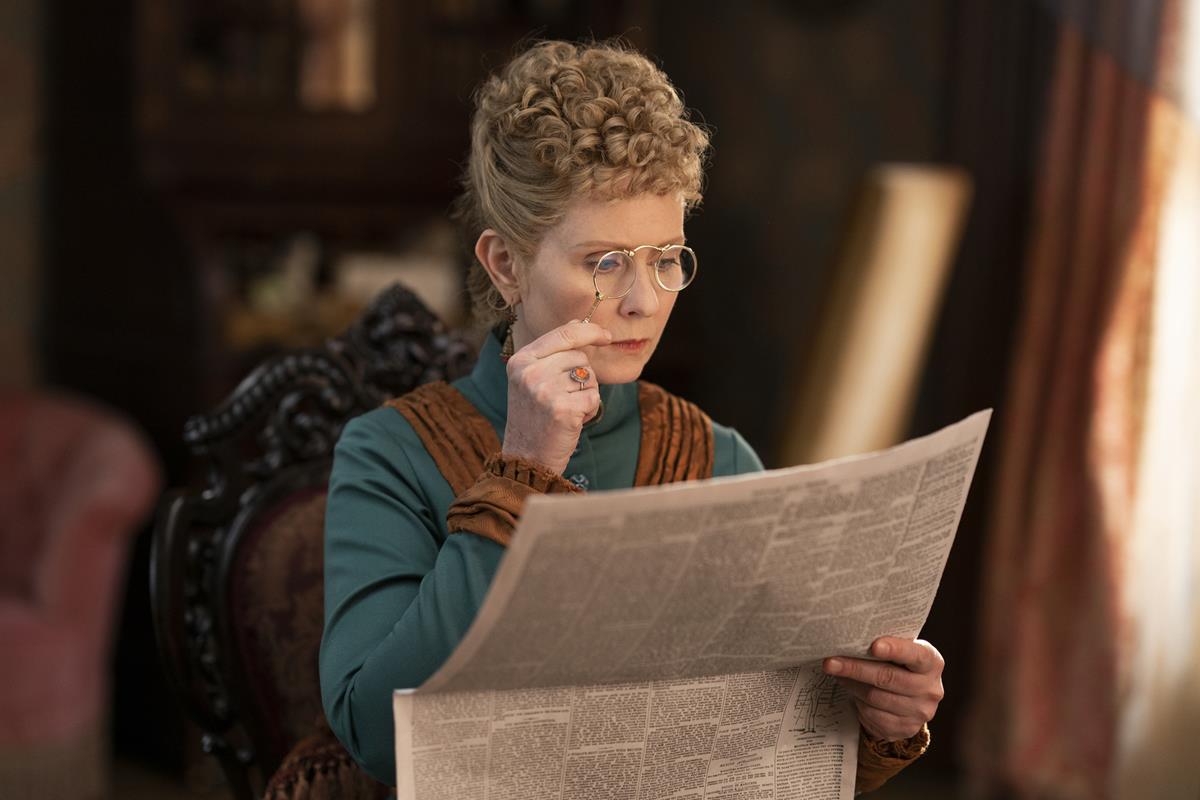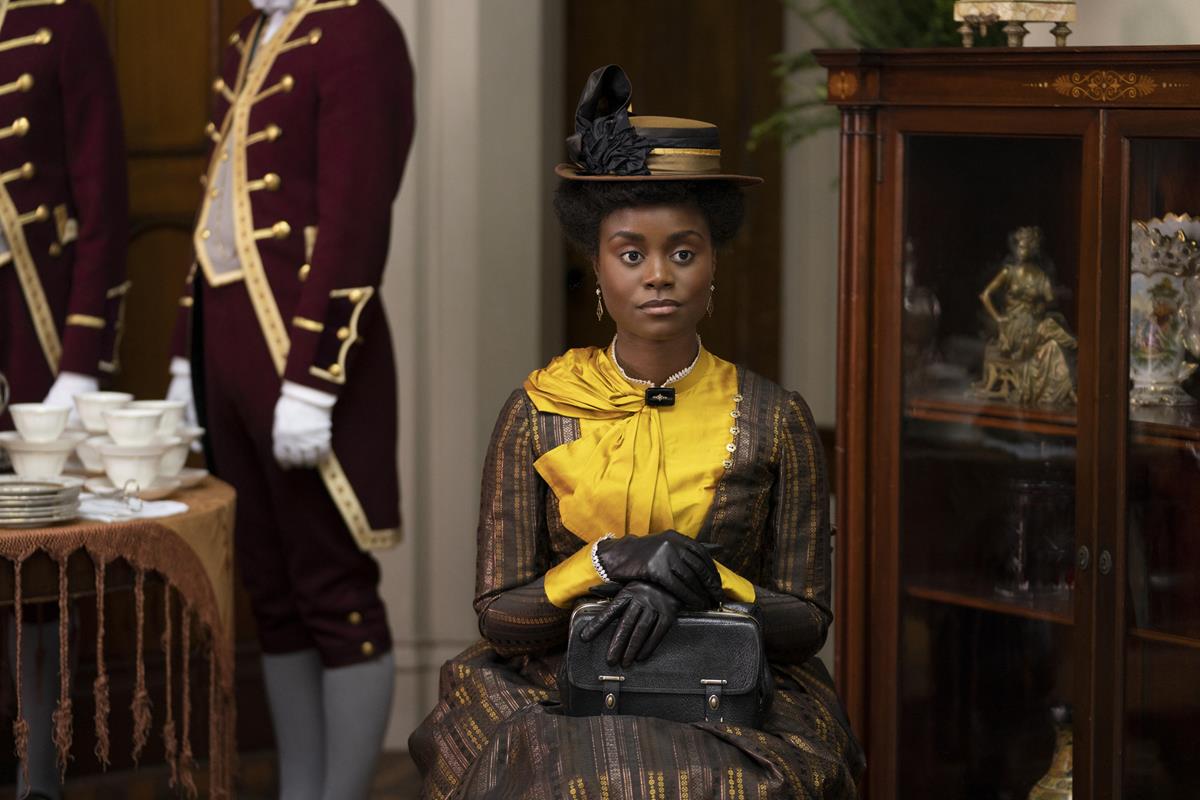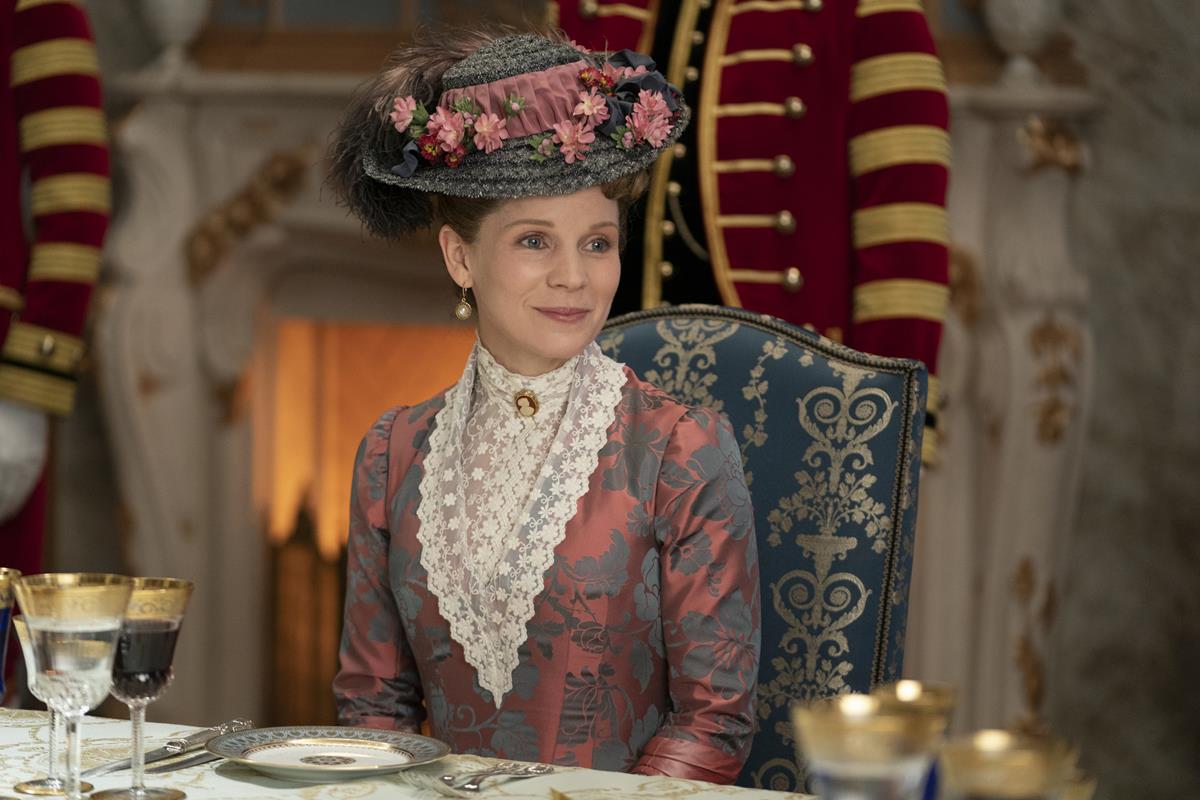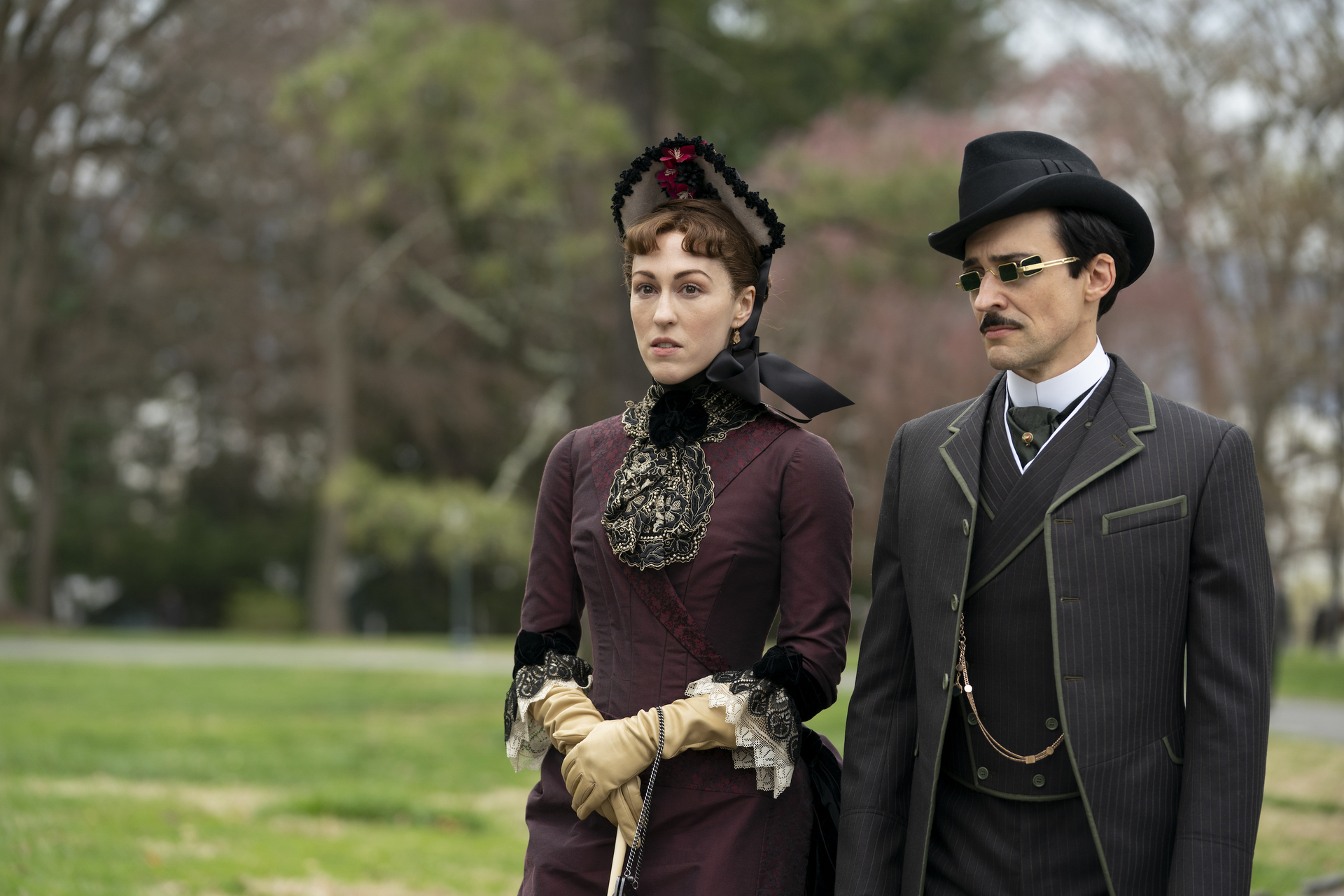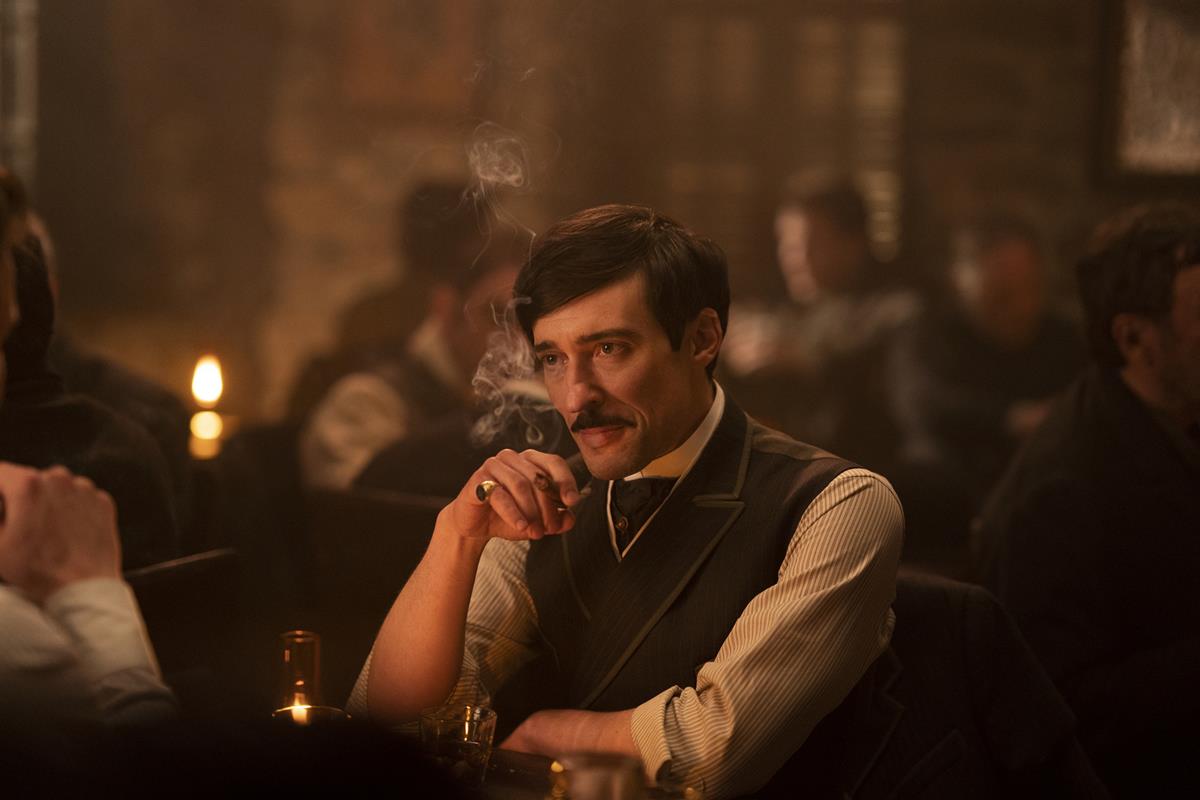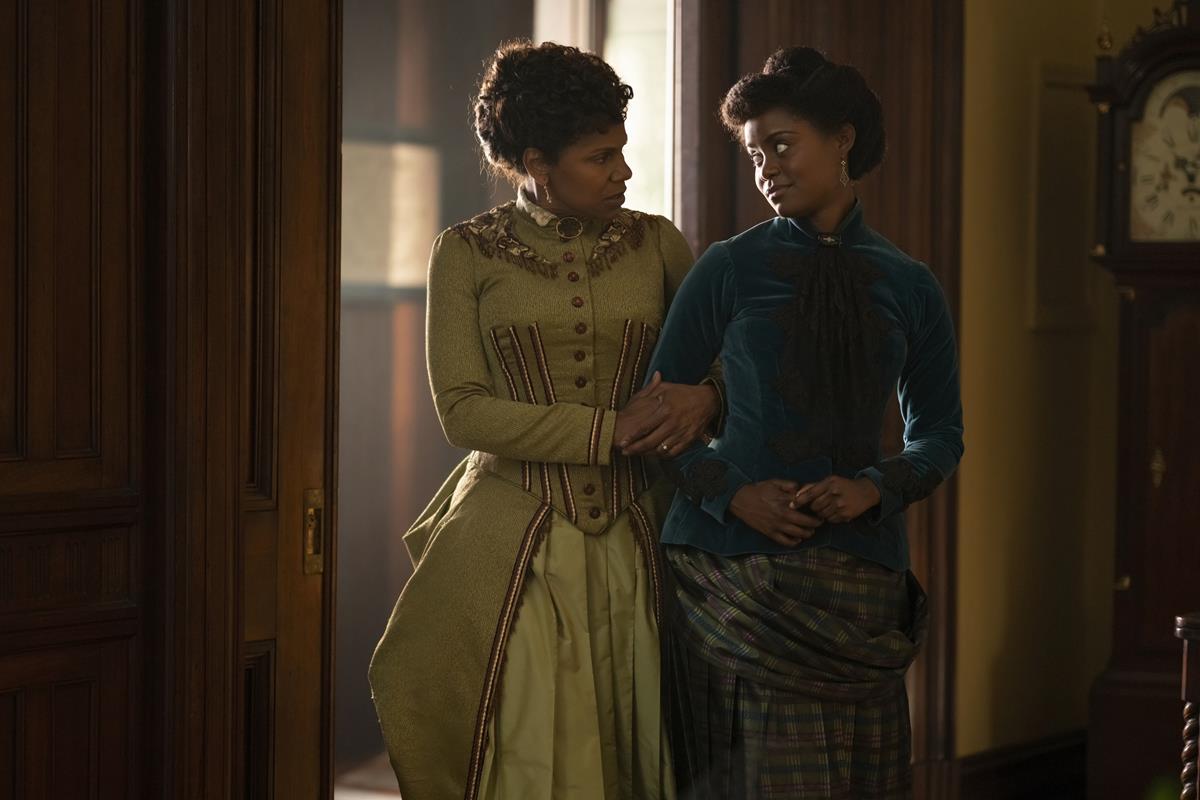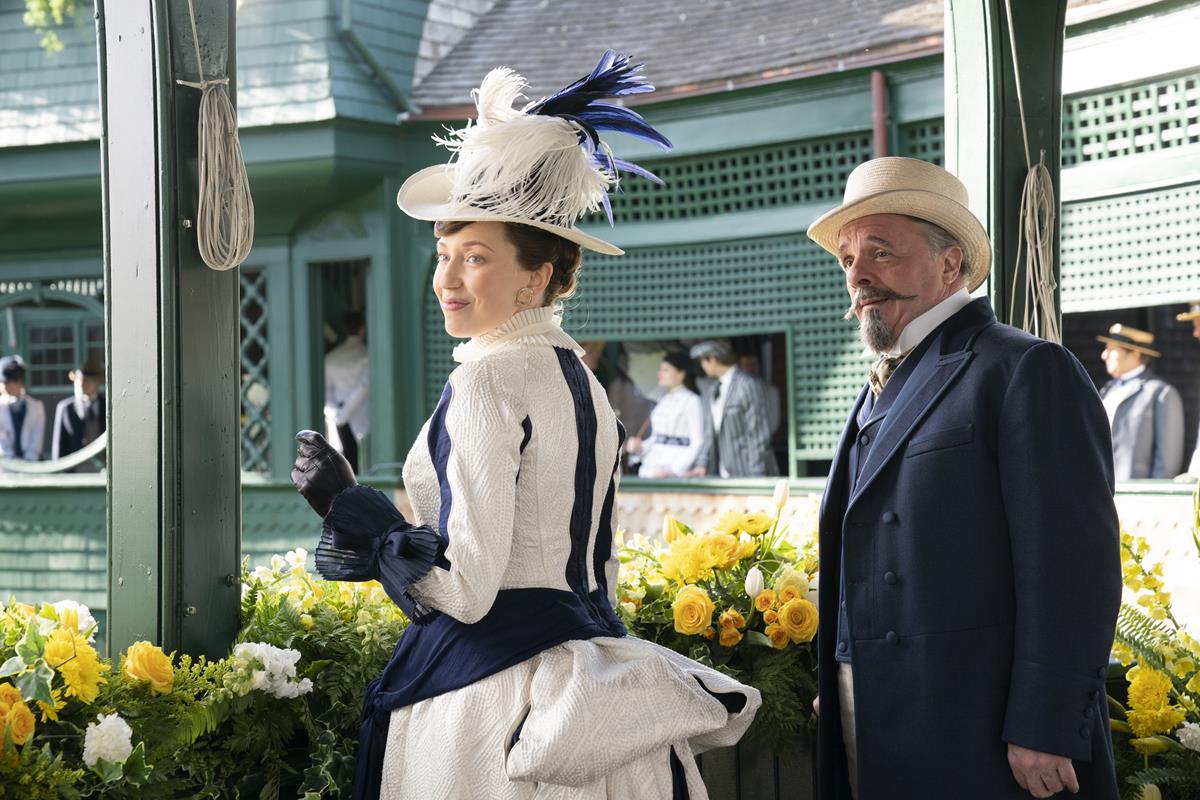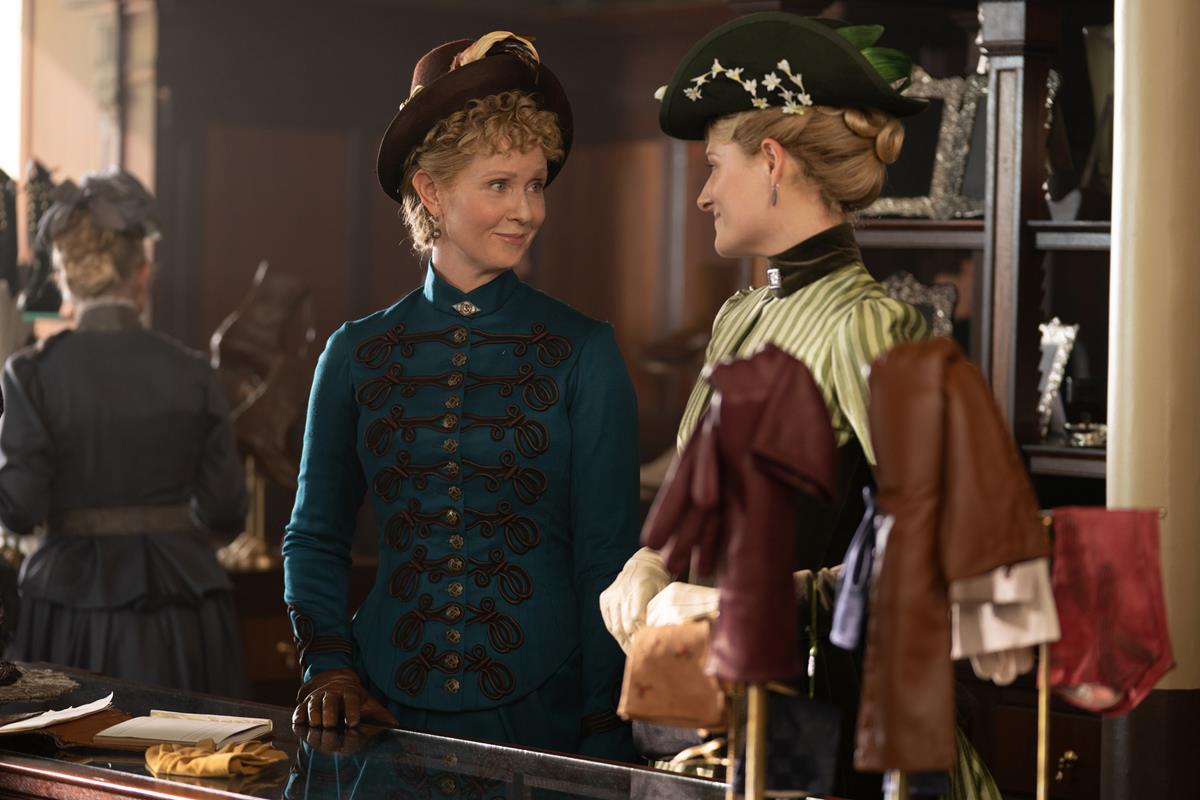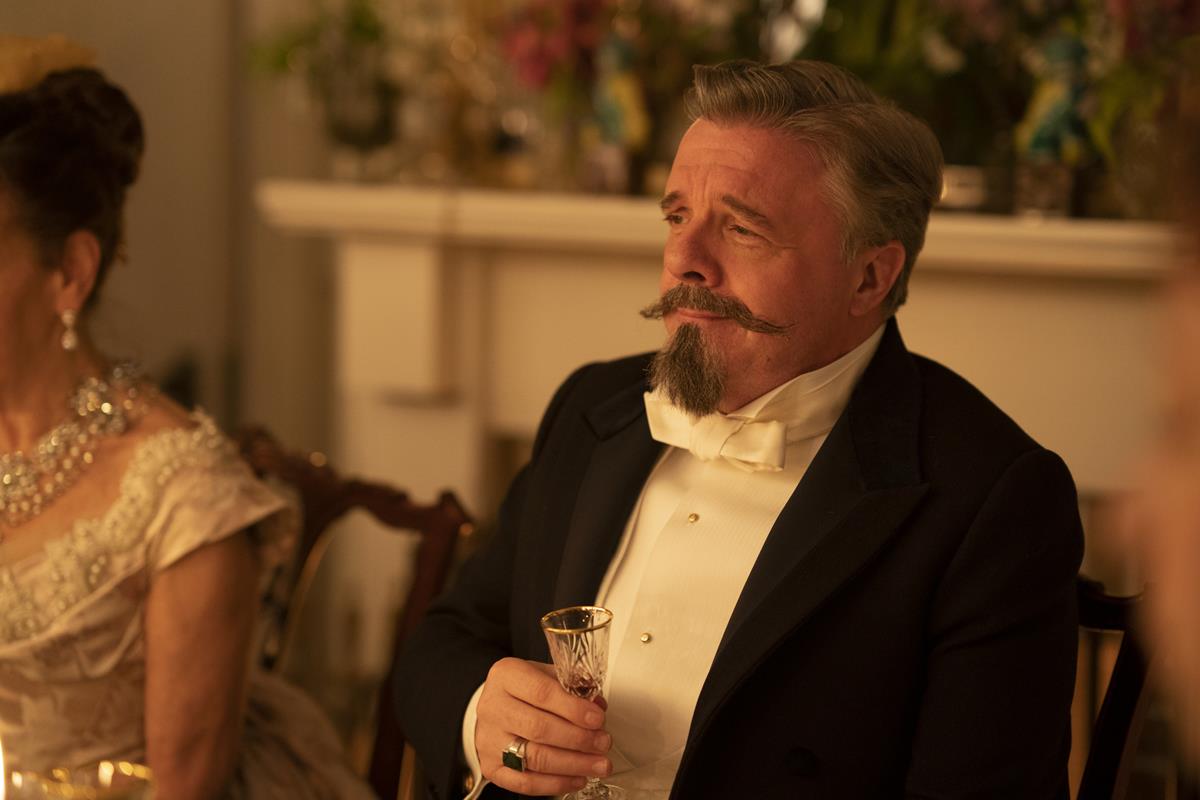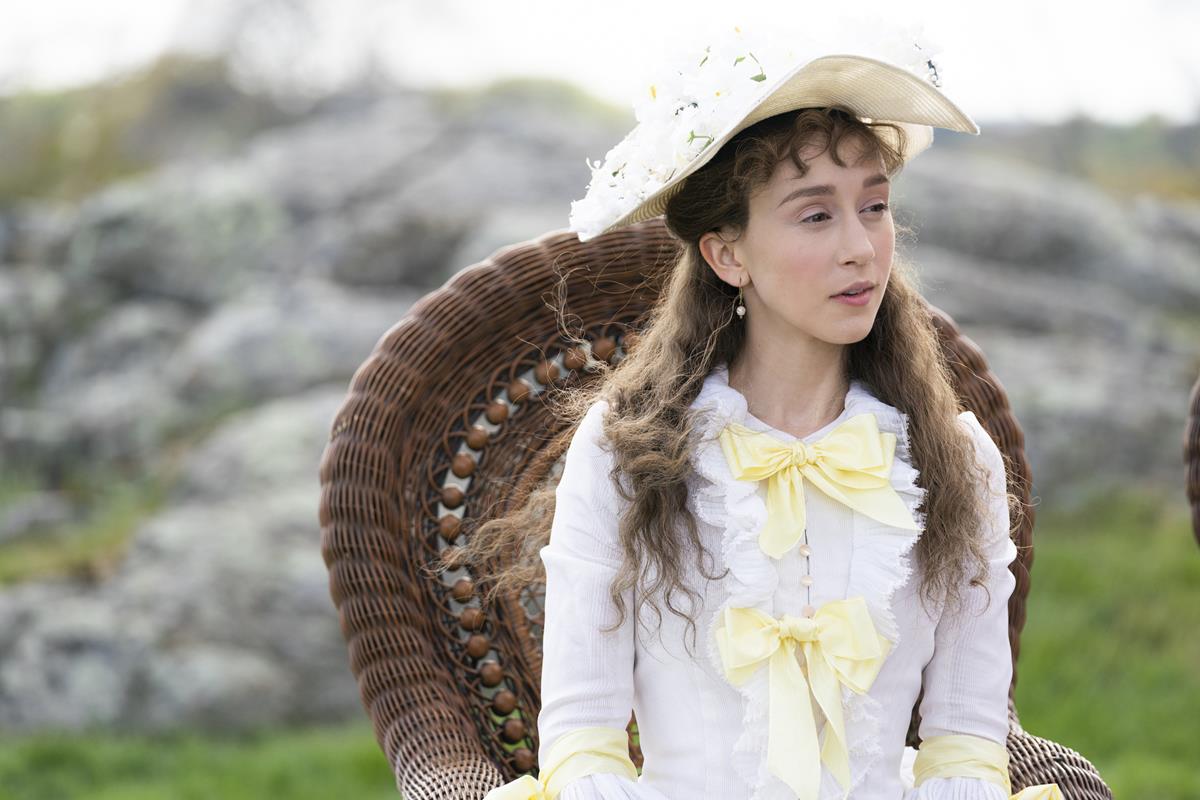
Would it be possible that the elderly Mrs. Patmore, the cook from Downton Abbey, could turn up in The Gilded Age? There’s 30 years between the shows, but never say never, The Gilded Age co-writer and producer Julian Fellowes declares. “But they are two different stories” he quickly ads.
For most viewers, the luscious new HBO series will be seen as the American Downton Abbey, mainly because of the way Fellowes and co-writer Sonja Warfield conceive their tapestry of stories.
It would be unfair to call the process “templated,” but the characters are interchangeable to a point. Let’s not forget that the Robert Crawley, Earl of Grantham in Downton Abbey, married a so-called “Dollar Princess” from the US to help save his estate. A storyline that could be picked ready baked from the ideas pile of The Gilded Age. (Winston Churchill was the son of another “princess,” Jennie Jerome).
According to Sophia Moir on BT’s Best of TV blog, Julian Fellowes was reported to be planning an American spin-off prequel of Downton Abbey as early as 2012.
“He was thought to be focusing the show on the early romance of Lord Grantham (Hugh Bonneville) and his American wife Cora (Elizabeth McGovern), before they married to become the Earl and Countess of Grantham and had their three daughters.
“Whilst The Gilded Age does not appear to be the spin-off that was originally proposed, creator Julian Fellowes has said that he hopes to have a younger version of the Countess of Grantham appear in the show at some point.”
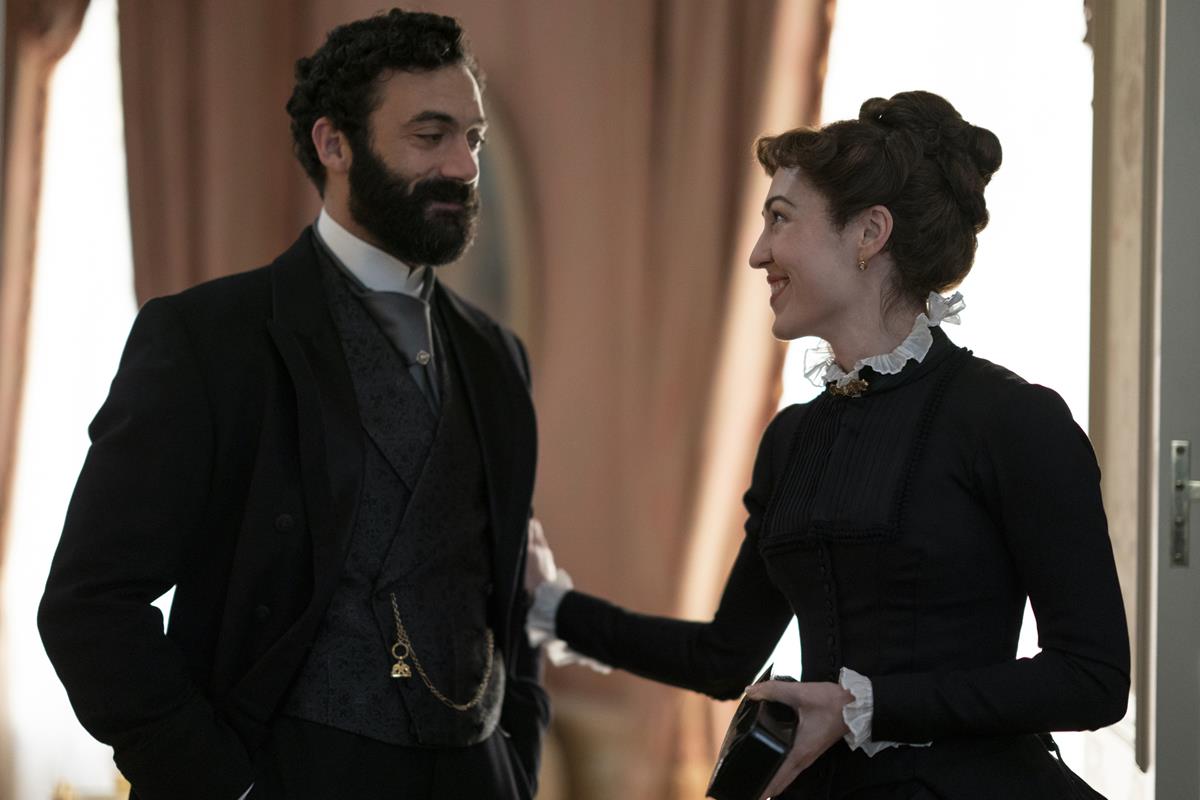
READ MORE: The Gilded Age: Downton Abbey creator Julian Fellowes turns his hand to 1880s New York City for epic new HBO period drama (BT)
But what is certain is that Fellowes has picked a pivotal time in American history. Soon after the abolition of the slave trade and even sooner after the American Civil War, the country entered the Gilded Age, which spanned 30 years of massive economic growth and included wage increases of 60% and more. This was the new money that the old money had to contend with, a cradle for ensuing TV dramas 150 years later.
This is a period in American history rarely captured on screen, suggests David Geffner in his ICG interview with Fellowes. “It began with a simple interest, not necessarily with the idea of a TV series in mind. I read a book about Alva Vanderbilt and her daughter, Consuelo, and then books about Jay Gould, Carnegie, and Frick,” the writer tells Geffner. “I started to find the Gilded Age homes that had survived when visiting New York, and then I was taken to dinner at the University Club, built by [architect] Stanford White at the peak of the Gilded Age.
“All of this gave me a sense of who these people thought they were, and the more I studied it the more I realized it was a time when America redefined itself,” Fellowes continues. “The rich who came out of the Civil War were richer than anyone had ever seen…. They built these palaces to demonstrate their power and were no longer content to imitate the European aristocracies.
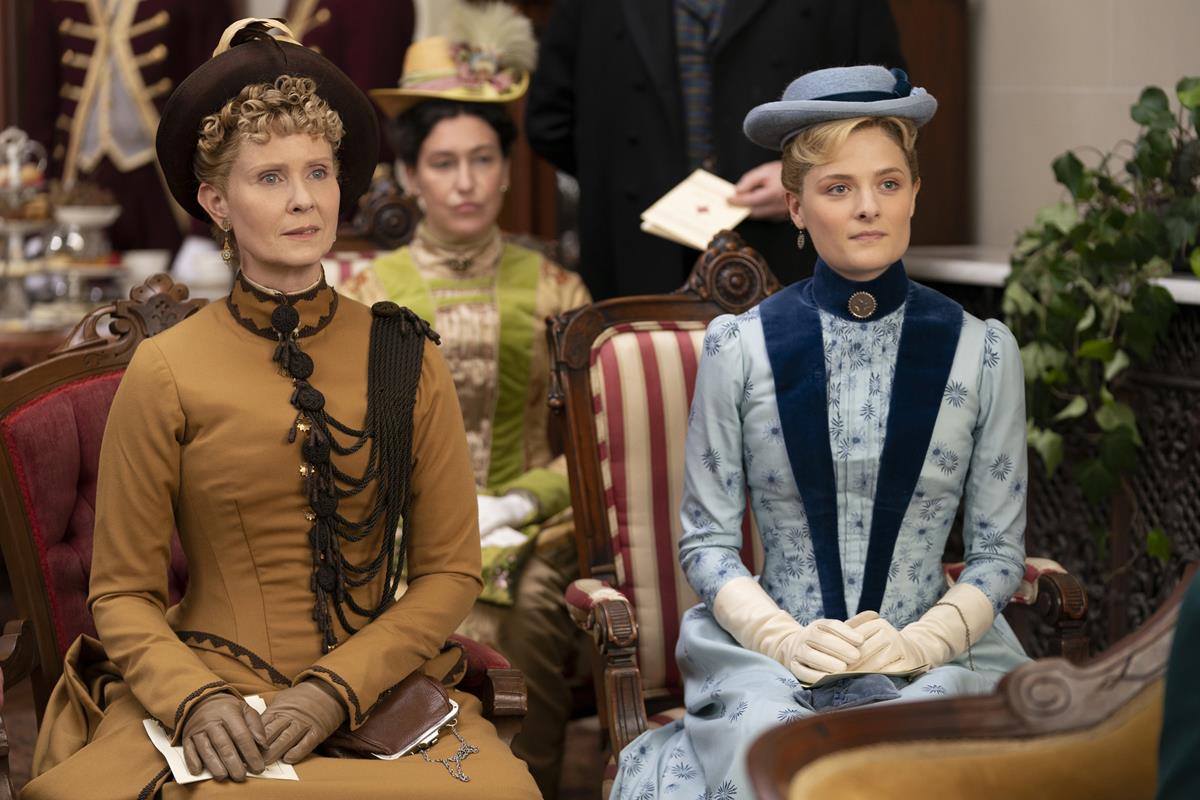
“Mrs. Astor, who was born into the old group as a Schermerhorn and had married fairly new money, thought she was uniquely qualified to blend these two groups into society. All of this made me feel it was a time of great energy and worth telling visually. It was a foreshadow of the century to come that America would dominate and continues to dominate to this day.”
READ MORE: Lord Julian Fellowes (ICG)
The 80-minute pilot is packed full of introductions of characters and storylines and, like an airport novel, it pulls you into both. But surely the biggest gift of all is the history lesson we’re all receiving subliminally, although the writers resisted the temptation to make the main characters real people, as Vanity Fair noted.
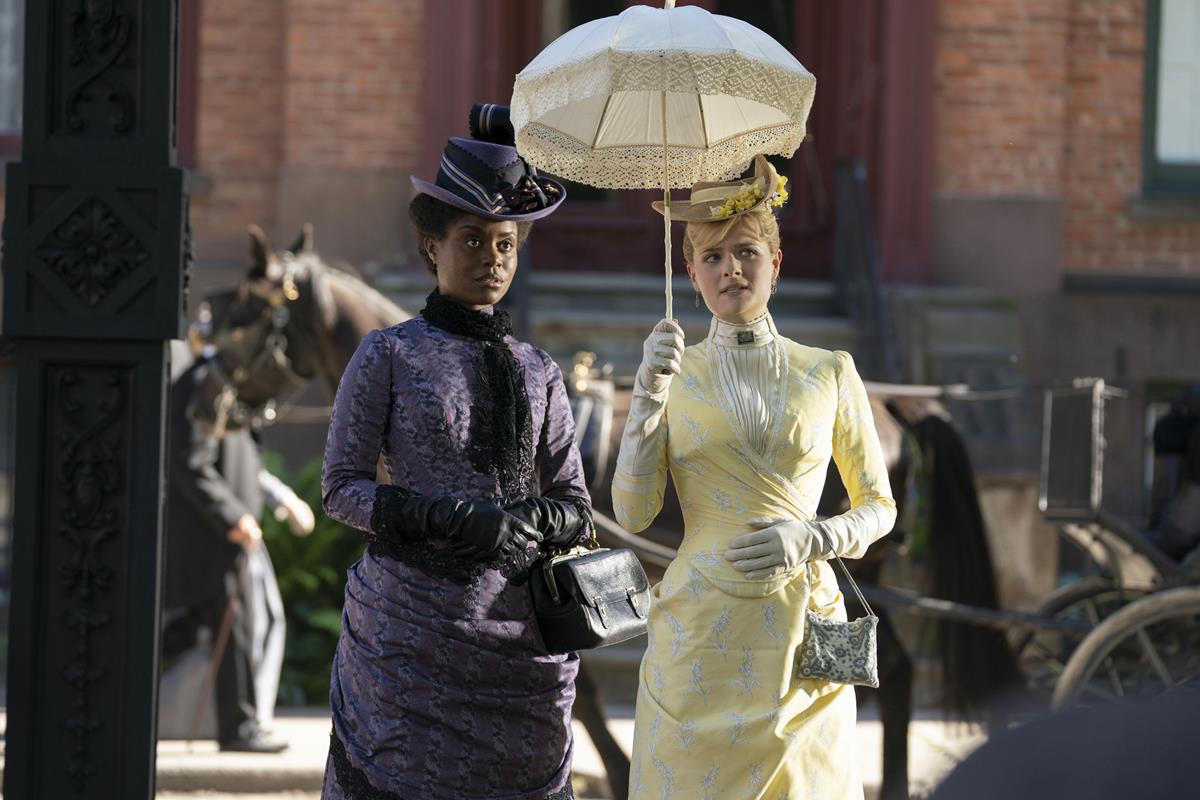
“The HBO series that [Fellowes] and writer Warfield (Will & Grace, She-Ra and the Princesses of Power) have created instead features a sprawling cast playing composite characters as well as some real-life Gilded Age figures, including imperious doyenne Mrs. Astor (Donna Murphy), her powerful consigliere, Ward McAllister (Nathan Lane), benevolent nurse Clara Barton (Linda Emond), and infamous architect Stanford White (John Sanders).
NOW STREAMING — BEHIND THE SCENES OF FAN-FAVORITE SERIES:
As the streaming wars rage on, consumers continue to be the clear winners with an abundance of series ripe for binging. See how your favorite episodics and limited series were brought to the screen with these hand-picked articles plucked from the NAB Amplify archives:
- “Severance:” Now, About Solving the Work/Life Balance…
- What “Yellowjackets” Did To/With Its Viewers
- Class Is Definitely Not In Session: The Horror Delights of “All of Us Are Dead”
- “The Dropout” Is a Slow-Motion Car Crash (and We Can’t Look Away)
- The (Unavoidable) Universal Appeal of “Squid Game” Is By Design
“Striving for accuracy, the production relied on Rutgers history professor Erica Armstrong Dunbar, Ph.D., who tells V.F. that she read scripts and supplied authenticity and sensitivity suggestions. Still, she recognizes that the show takes some liberties. ‘The real desire [was] to [create] the feeling of what it meant to be wealthy at that time,’ she said. ‘What it meant to have so-called new money, and the extent to which people worked to get it.’ ”
READ MORE: Separating Fact From Fiction in The Gilded Age (Vanity Fair)
The Gilded Age’s journey to production was certainly long and perhaps checkered, but not more than any other under the clammy canopy of COVID-19. The Hollywood Reporter dug into the show’s passage to air). “Fellowes pitched the idea (of the show) to then-chairman of NBC Entertainment Bob Greenblatt in 2012, and that same year NBC announced the series was in development, at a time when Downton Abbey had already proved to be a ratings success in the US.”
The first draft of the pilot arrived in 2016, but at the time that the Downton Abbey feature film was being developed. NBC finally gave The Gilded Age a series order in 2018, with an intended air date one year later.
“Then, a sudden announcement in the spring of 2019: The Gilded Age was moving to HBO. Reports of why the series left NBC at that time focused in part on the project’s scale. Greenblatt ended up bringing The Gilded Age to HBO when he left NBC to become chairman of WarnerMedia Entertainment in 2019.”
Production started and promptly stopped in March 2020 as lockdown was called. Although it started up again in September of that year with unprecedented levels of protocol. “We had an etiquette that rivaled Versailles,” Fellowes says of the set’s health and safety precautions.
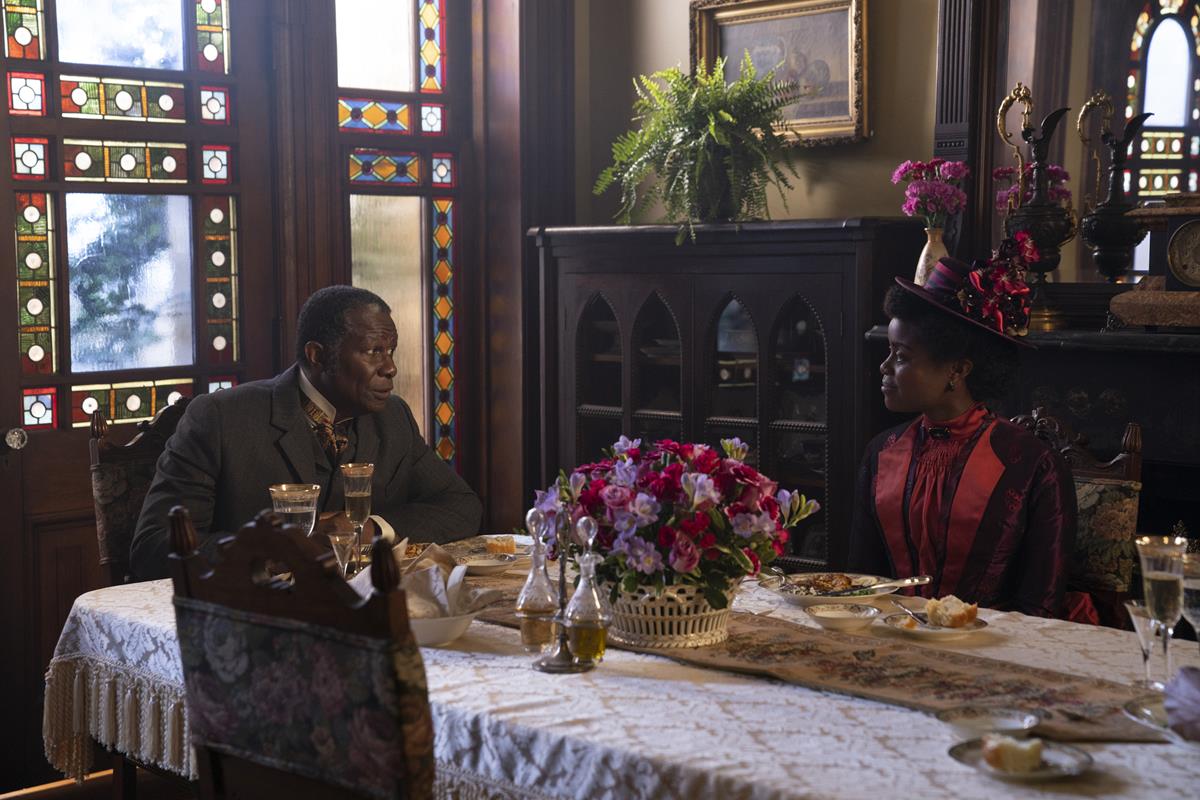
“COVID ultimately stretched the six-month production schedule into eight months and pushed the planned release date for the series (again) over a year.”
It also arguably lost its lead. Amanda Peet was initially cast as the new-money socialite Mrs. Bertha Russell — a potato digger’s daughter. But she dropped out due to scheduling conflicts, with the role then assumed by Carrie Coon.
The shoot, in mostly New York, had some unexpected benefits, because of its locale, as many temporarily unemployed Broadway actors were signed up for the show while their theaters were shuttered. “The series was crossboarded,” with multiple episodes shot at the same time rather than in episodic blocks, “so having the actors right there and available to us on a daily basis was very important,” said producer Gareth Neame.
The production shut down for 48 hours at one point due to what several people on the series call false-positive COVID results, and there were a few individual cases of workers getting the virus over the course of shooting, though an actor never got sick.
READ MORE: Inside the Long Journey to Get ‘The Gilded Age’ to the Screen (The Hollywood Reporter)
In preparing the look of such a sumptuous milieu, the production team — which included directors/executive producers Michael Engler and Salli Richardson-Whitfield, directors of photography Manuel Billeter and Vanja Černjul, ASC, production designer Bob Shaw, and costume designer Kasia Walicka Maimone — drew cultural research to bring the series to life, including paintings by John Singer Sargent, the Hudson River School, and the French illustrator James Jacques Tissot; novels by Wharton and Henry James; French couture collections of the era; and even a book on the history of electric lighting.
In a separate article for ICG, David Geffner reports how 30 Rock veterans Černjul and Engler visually distinguished the two social contexts of “Old New York” and “New New York” within the series: “We didn’t want to use any formally distracting or obvious stylistic choices,” relates Černjul. “We wanted the differences to be felt rather than easily seen. We wanted Old New York to feel like the romantic paintings of the early 1800s, with their sense of an idealized past and escapism from the waves of change that came with industrialization. And with that reference came more controlled compositions and a painterly, portraiture look.”

Scenes with the new moneyed class “needed the kinetic energy of Modernist art, while still maintaining an overall formalism to the frame,” Geffner writes.
“We rarely ever used Steadicam, always a stabilized [Libra] head on a dolly for movement. ‘New New York’ was also portrayed in louder, visual statements,” says Černjul.
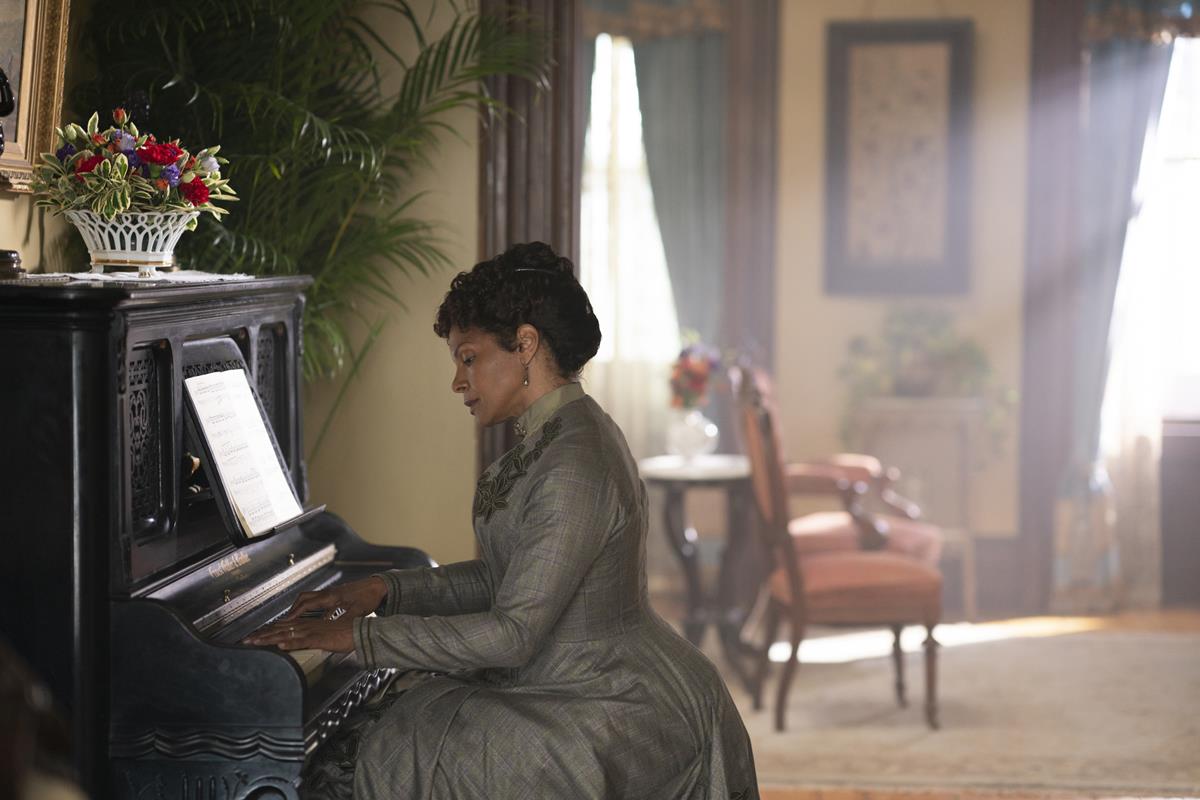
“We used Cooke 2X anamorphic lenses for the ‘Old New York’ scenes [with the Panasonic VariCam Pure 4K],” Billeter recounts, “as the anamorphic glass provided that hint of romance and nostalgia.”
READ MORE: All That Glitters… (ICG)
To encompass the scope of the two social settings, the production was forced to create a backlot just for the show. “We could never control a real street, for as many times and as many ways as we needed, with all the street covering, the horses and carriages, the gas lamps, and all that kind of stuff, Engler tells Collider’s Christina Radish. “So, we decided that was the centerpiece. We wanted it to feel, in a way, almost like Rear Window, where from either house, you could look outside across the street and see the other house. It was always clear that that’s what our story is based on — these two houses that represent the old world and the new world, and the conflict there.”
Engler continues: “And then, we decided it was really important to feel the lushness, the richness, the detail, the scope of the period of The Gilded Age, with all of that great beauty and pageantry and everything that audiences come to this kind of thing for, but to also have a difference from Downton Abbey. It has an urban and gritty, at times, feel about it. This is the growth of a big, powerful city, and not just a bunch of pretty houses and a bunch of lovely dresses and beautiful rooms. It goes out into the world with much more energy and gusto.”
READ MORE: The Gilded Age’s Directors on Setting Up the Look and Feel of the Series (Collider)
The backlot was constructed at the Museum of American Armor, in Old Bethpage, NY, which housed the imposing edifices and opulent interiors that together recreated a stretch of 19th century Manhattan’s East Side. The show also uses locations in Troy, New York, and Newport, Rhode Island.
Sets were built on soundstages on Long Island, including for the myriad rooms of the Russell mansion, decorated with period-appropriate fabrics and patterns made by some of the same European companies that fabricated the originals in the 1800s.
Bob Shaw, the show’s production designer, told The New York Times’ Dave Itzkoff that compared to past HBO series he had worked on, including The Sopranos and Boardwalk Empire, it was “the biggest build” he had ever done.
“We kept drawing and doing illustrations, and they kept saying yes,” Shaw adds. “You draw a grand staircase, and you’re waiting for someone to say, ‘Well, how many times are they going to go up the stairs?’ And that never happened.”
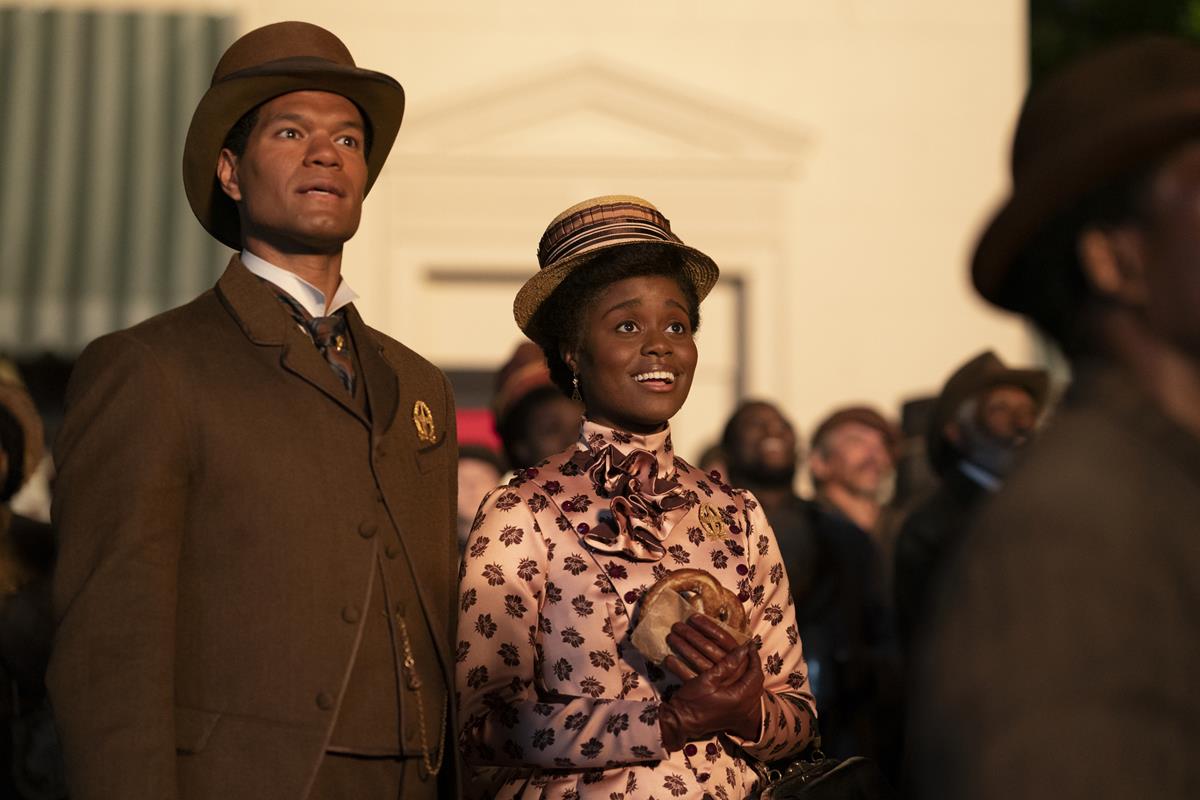
READ MORE: ‘The Gilded Age’ Finally Arrives on HBO (The New York Times)
But for some, The Gilded Age type of show is starting to show the dull metal underneath. NPR is one of those. “How many shows about messed-up rich white people does television, and specifically HBO, need?
“It’s not a knock on the quality of this show, which is really good, to point out that it’s a choice to keep doing this — Big Little Lies, Succession, The White Lotus, The Undoing — rather than other things.
“The sheer volume of stories that pick up these little clumps of people and turn them over and pick them apart to see how they work communicates a centrality to them and a disproportionate interest in their humanity (or lack thereof).”
READ MORE: ‘The Gilded Age’ gives old New York money the HBO treatment (NPR)
The Hollywood Reporter’s Lesley Goldberg and Daniel Fienberg feature an interview with Fellowes in THR’s TV podcast, “TV’s Top 5,” discussing the HBO show’s decade-long development process and the period drama’s exploration of Black and gay characters.
READ MORE: Julian Fellowes on Downton Abbey Follow-Up The Gilded Age (The Hollywood Reporter)
The Gilded Age makes more effort to address the role race plays in class structures “in a single plotline” than “Downton Abbey did in its entire run,” Daniel Fienberg writes in his review for The Hollywood Reporter.
“The title of The Gilded Age speaks to a certain surface luxury, and my plot summary is stuck on the surface. Although the primary point of contrast in The Gilded Age is between Old and New, each of the households has a full downstairs staff and after five episodes, I was still describing certain characters as ‘Valet With New York Accent’ and ‘Maid With Irish Accent’ even after they had full subplots. Just as COVID variants may soon cause us to run out of letters in the Greek alphabet, the number of storylines in The Gilded Age exceeds what could be listed in a traditional A-story, B-story structure.
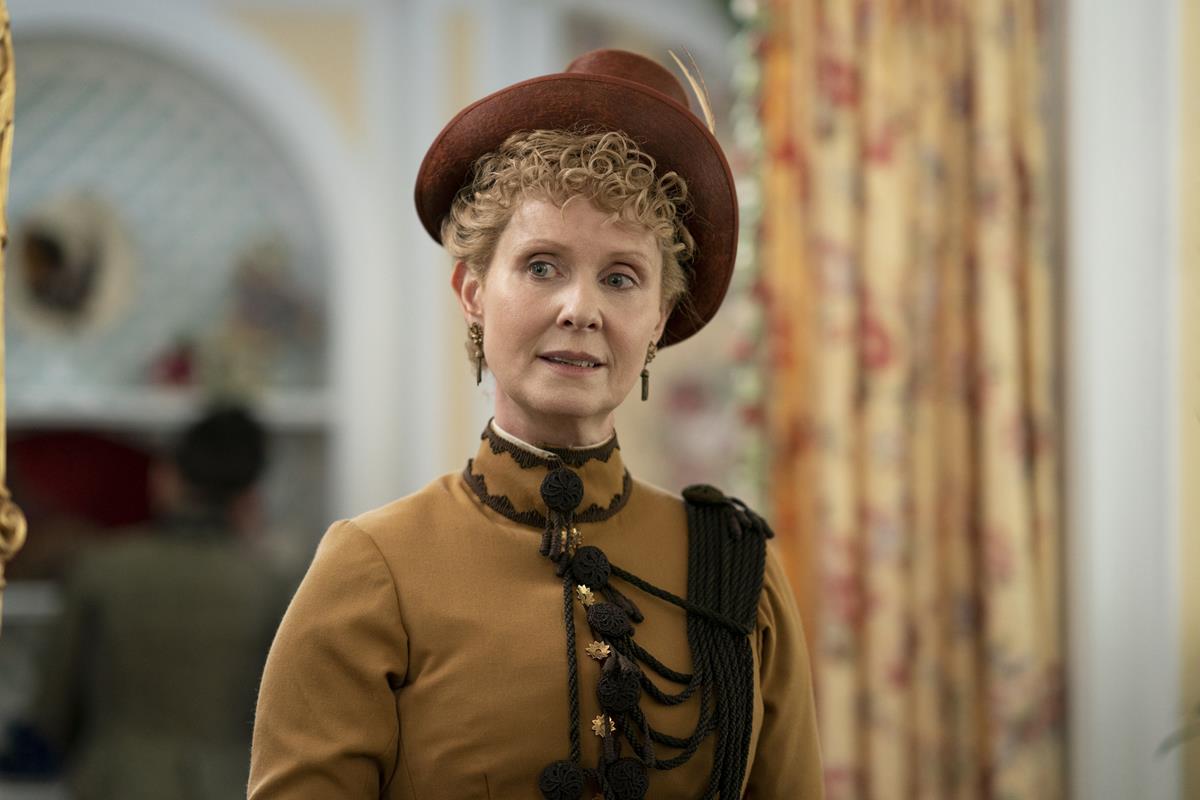
“Do I want Marian [Brook, played by Louisa Jacobson] to find love and not become a meek lapdog to Agnes (Christine Baranski) and Ada (Cynthia Nixon)?” Fienberg asks. “Sure, I guess. Jacobson has some feisty charm. Am I immediately invested in whether Agnes will ever come to accept Tom Raikes (Thomas Cocquerel), a country lawyer smitten with Marian? Less so.”
READ MORE: HBO’s ‘The Gilded Age’: TV Review (The Hollywood Reporter)
Much of the dialog Fellowes, writing with Sonja Warfield, has penned for his characters is “aphoristic to a fault,” says Variety’s Daniel D’Addario. “Fellowes, never afraid to indulge cliché, outdoes himself throughout The Gilded Age. Christine Baranski’s Manhattan doyenne is “not concerned with facts, not if they interfere with my beliefs,” and advises a protégé to “only help those who help themselves.”
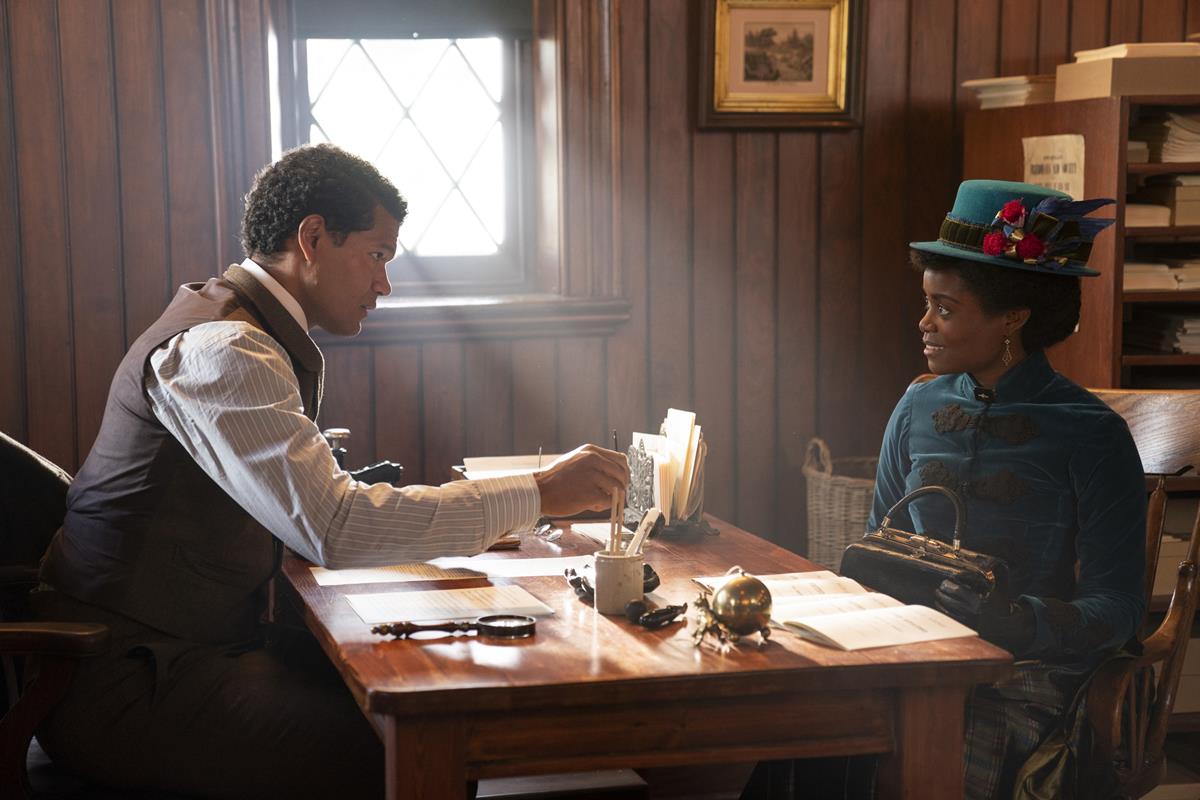
“There’s a certain snap missing from many of the interactions between Fellowes’ characters, who can feel less as if they’re matching wits than as if they’re reading from the same joke book,” observes D’Addario.
“One of the women who has spurned aspirant socialite Bertha Russell (Carrie Coon) has come to ask her for a favor, and Bertha decides to deliver a lesson instead. ‘I hesitate to teach the basics, but life is like a bank account,’ she declares. ‘You cannot write a check without first making a deposit.’ And yet Coon’s delivery and bearing carry the scene over the line — and the same is true for the acting across the board.”
READ MORE: Julian Fellowes’ ‘The Gilded Age’ Conjures a Bygone World: TV Review (Variety)
But let the last word come from the BBC, surely the authority on period drama, high on swirly dresses, family sagas, soapy love stories and changing times. “The Gilded Age captures all the glamour, extravagance and snobbery of a period now safely at a distance.
“The nouveaux riche are still with us, of course, but today they are likely to be tech billionaires, judged on whether they create philanthropic foundations, as Bill Gates did, or use their fortunes to propel themselves into space like Jeff Bezos.
“Then and now, their stories are a reminder that when Mark Twain created the phrase The Gilded Age, he was mordantly pointing out the period’s surface glitter, not its gold.”



